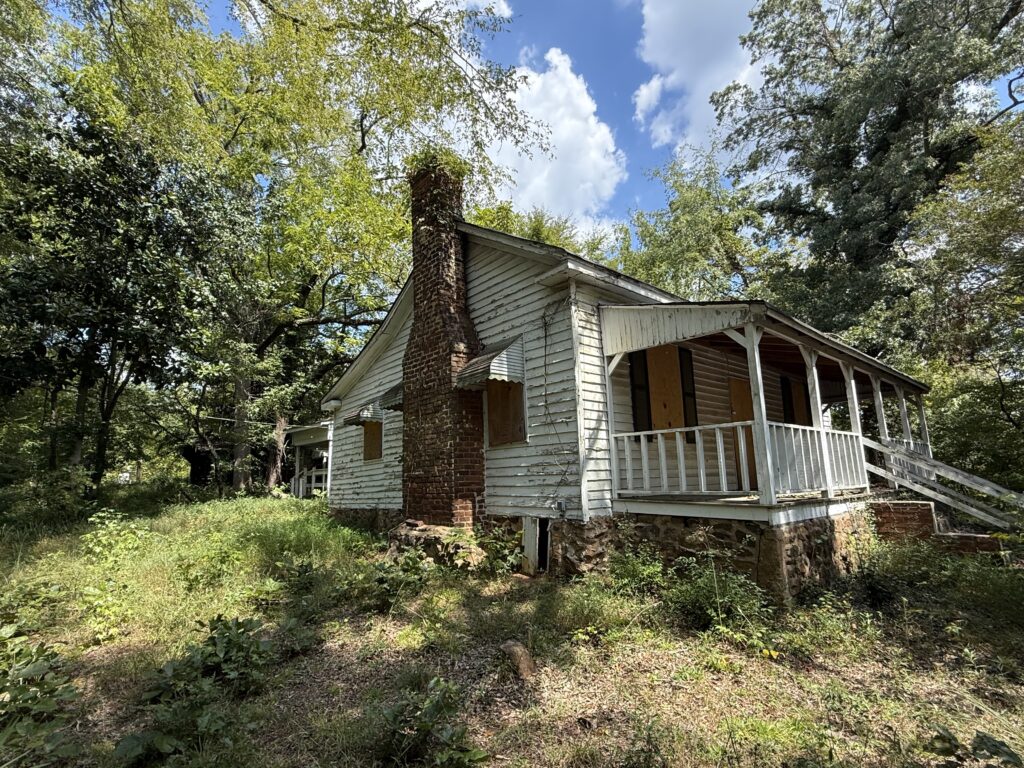Federal Funding Cuts Affect National Parks, but also Local Businesses and the Environment
October 10, 2025
Views: 7
The total federal funding for the National Park Service (NPS) in 2025 was $3.337 billion. That’s seven percent less than the Biden administration’s request of $3.576 billion. The Trump administration has proposed a cut of more than $1 billion across the operation of NPS, including its historic preservation fund, construction and national recreation and preservation grants in 2026.
Even though we may not see it happening, these funding cuts have a real effect on people, places and the environment. One local business in Athens that these cuts have affected is Arcollab, an architectural firm.
Arcollab was hired to conduct historic structures reports as part of historic preservation projects for the Wallis House at Kennesaw Mountain National Battlefield Park and the Clark House at Jimmy Carter Boyhood Farm at the Jimmy Carter National Historic Park.
Quint Newcomer, the director of sustainability and business administration with Arcollab, said in both cases, Arcollab was nearly done with the fieldwork and documentation for the reports when the projects were stopped.
“We go in and do these assessments and basically say, here’s the existing conditions, here’s what it’s going to take to shore it up so that it doesn’t fall down, and then here’s what it would take to actually rehabilitate it into a preservation state,” he said.
Newcomer said Arcollab was affected financially by these projects being stopped. He was concerned about filling slots with other work. He was also worried about projects that would no longer be finished, like the Wallis House, which served as a field hospital for Federal and Confederate soldiers during the Civil War, could be lost because of its current state.

“The sad part now is that, given the shutdown, we’re concerned that the house is just going to fall in on itself,” said Newcomer. “Then all we’ll have left are the pictures of it and the documentation.”
These cuts from the federal government are also affecting the environment.
The reuse of historic buildings consumes less energy and reduces the consumption of materials better than constructing new buildings, according to the Washington State Department of Archaeology and Historic Preservation.
Scott Nesbit, the director of the University of Georgia’s master of historic preservation program, said the adage “the greenest building is one that’s already built” is largely true, and there is a lot that goes into that.
“It’s not just about labor costs, it’s also about the materials that would otherwise end up in a landfill,” Nesbit said. “It’s about the cost of making new materials and processes that are required to make those new materials.”
These materials can negatively affect the environment, as approximately 35% of construction and demolition waste ends up in landfills, according to the National Library of Medicine. They can also negatively affect the surrounding property values and the quality of life for surrounding residents.
The process of preserving historic buildings is very detailed and is never the same for any two. Newcomer mentioned that while preserving the materials used for these historic buildings, they often have to add stabilizing structures while maintaining the original layout and feel.
“They’ll go in and design these structural interventions to really just stabilize the building,” he said.
Then you go back in and use the same kinds of materials, if you can find them, or very similar kinds of materials to represent it, and put the building back the way it originally would have been done.”
Newcomer also mentioned that preserving these buildings is not all about the environment, but protecting the culture around them that could be lost if parks do not receive funding in order to complete preservation projects. Otherwise, visitors and those who are interested will not be able to see the history associated with these buildings outside of documentation.
“It’s more of a social or cultural aspect of sustainability, that you’re preserving this important resource that has cultural and historic significance, and means something to people,” he said. “It’s part of what makes sense of a place, of people’s identification with that location.”
If parks do not receive enough funding, buildings like the Wallis House that we do not see every day could be forgotten about, along with the memories and culture that are associated with them.
Jacob Ogden is a senior majoring in journalism with a Certificate in News Literacy.
Search
RECENT PRESS RELEASES
Related Post




